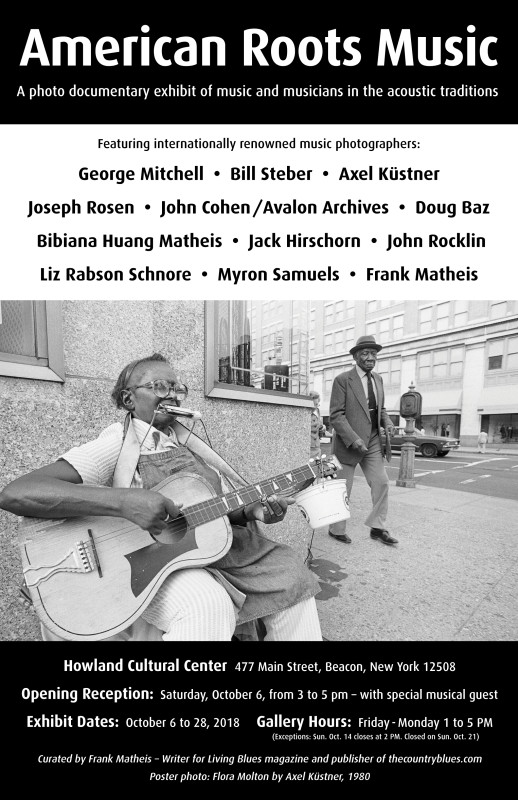thecountryblues.com sponsors “American Roots Music” photo exhibition in Beacon, New York
All photos are copyrighted by the photographers and protected under international law. Illegal download is theft. Please don’t steal.
Frank Matheis, publisher of theountryblues.com curates an exhibition that brings together some of the most prominent and internationally renowned photographers in an exhibit of black and white fine art photography of music and musicians in the acoustic traditions. The documentary photo exhibit will take place at:
The Howland Cultural Center: 477 Main Street, Beacon, New York 12508
Opening Reception: Saturday, October 6, from 3 to 5 pm – with special musical guestLowry Hamner
Exhibit Dates: October 6 to 28, 2018.
Gallery Hours: Friday-Monday 1 to 5 PM. Exceptions: Sun. Oct. 14 closes at 2 PM. Closed on Sun. Oct. 21
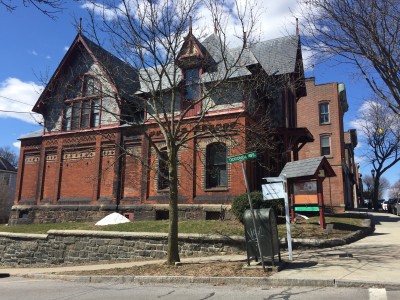
The Howland Cultural Center in Beacon, New York
George Mitchell • Bill Steber • Axel Küstner • Joseph Rosen • Avalon Archives • Douglas Baz/Charles Traub • Bibiana Huang Matheis • Jack Hirschorn • John Rocklin • Liz Rabson Schnore • Myron Samuels • Frank Matheis
Roots Music includes the musical forms that pre-date the era of electronics, synthesizers, and modern recording methods. “Roots” music is the music that gave rise to other musical styles that followed from the early to mid- 20th Century. It was the folk music that people played at home, in their own communities. The roots of rock-and-roll were acoustic blues, country and hillbilly music. Before there was rap, hip-hop, soul and funk there was the rural down-home blues. The exhibit features music and musicians that still carried on the old acoustic traditions, often without fame. The exhibit explores folk, roots and blues traditions of both black and white America, including blues, Cajun, folk, country and more.
The exhibit will also feature a special tribute to the late Little Sammy Davis, a blues harmonica player and longtime Hudson Valley resident.
Bill Steber
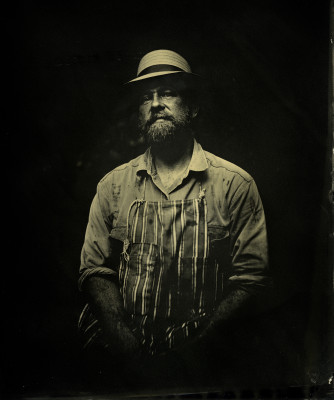
Wetplate self portrait. Photo by Bill Steber
Musician, documentarian of blues life and photographer Bill Steber resides in Murfeesboro, Tennessee. He is a critically acclaimed photographer whose work has achieved international fame as a major contributor to the prestigious blues publication Living Blues, where his striking and intimate photos are frequently featured. Bill Steber has documented blues culture in Mississippi for the last 20 years, chronicling the state’s blues musicians, juke joints, churches, river baptisms, hoodoo practitioners, traditional farming methods, folk traditions and other significant traditions that gave birth to or influenced the blues. Besides his technical proficiency, he manages to bring out the humanity of his photo subjects, in part because he is able to enter the milieu of the musicians, to enter their inner sanctums and capture them in a vulnerable, personal space. Steber exposes his musical subjects with an immediate privacy, an unprecedented closeness, as if you can see into their souls and feel their presence. His masterful photos are revelatory of true blues culture. Steber, a native of Centerville, TN, was a staff photojournalist for the Tennessean in Nashville from 1989-2004, winning dozens of regional and national awards while shooting everything from national politics to New York runway fashion and the Super Bowl. His latest passion is exploring 21st-Century American culture through the use of 19th century wet plate photography, including tintypes, ambrotypes and glass negatives. In addition to his photography, Steber makes music with The Jake Leg Stompers, the Hoodoo Men, The Jericho Road Show and The Worried Minds. His musicality is as impactful as his photography. He sings with a powerful blues voice, and he harmonica, guitar and ukulele, specifically banjo ukulele.
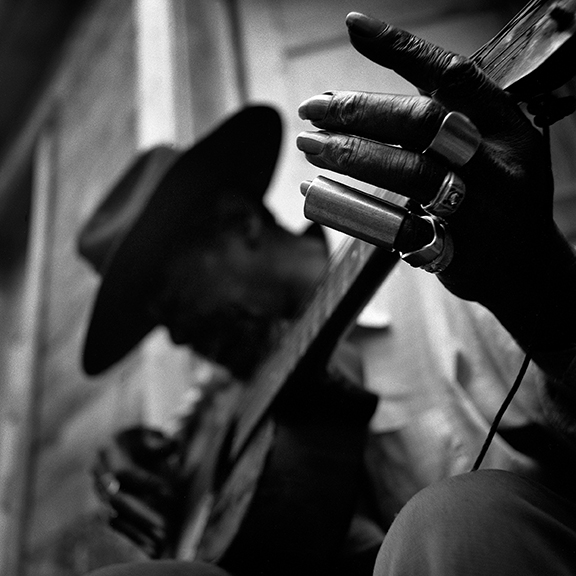
David Johnson, Elba Al. photo © Bill Steber
George Mitchell
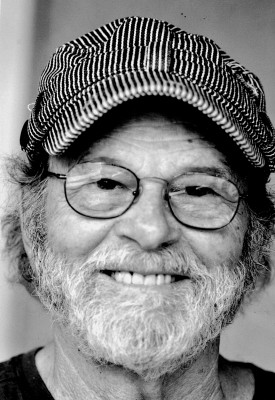 Born in Florida in 1944, George Mitchell moved to Atlanta at the age of two. In 1961, while still in high school in Atlanta, Mitchell began recording and photographing blues singers in Tennessee, including Furry Lewis, Will Shade, and Gus Canon in Memphis, and Sleepy John Estes in Brownsville. In 1963, he located and recorded the early Atlanta legends, Peg Leg Howell and Buddy Moss. Also in 1963, he worked in Chicago for Delmark Records and, with Michael Bloomfield, produced concerts at the Fickle Pickle, bringing in both unknown blues artists and locating such bluesmen as Washboard Sam. In the summer of 1967, Mitchell traveled with his wife Cathy and a Wollensack tape recorder and borrowed a 35mm camera from the University of Minnesota to document blues musicians in Mississippi. They recorded legends Fred McDowell and Robert Nighthawk (his final recordings), and became the first to record R.L. Burnside, Jessie Mae Hemphill, and Othar Turner. From 1967 until 1984, Mitchell recorded many unknown blues singers in Georgia and Alabama, including Precious Bryant, John Lee Ziegler, and J.W. Warren.In Atlanta in 1984, Mitchell produced the National Downhome Blues Festival, the largest gathering of old-time blues musicians before or since. A one-hour program of performances and interviews held during the festival was broadcast on PBS. The most recent albums of his recordings are available now on the Fat Possum label. His most recent book, primarily a photography book, is MISSISSIPPI HILL COUNTRY BLUES 1967. He is also the producer of the famed George Mitchell Collection. Mitchell resides in Fort Myers, Florida, with his wife, Cathy.
Born in Florida in 1944, George Mitchell moved to Atlanta at the age of two. In 1961, while still in high school in Atlanta, Mitchell began recording and photographing blues singers in Tennessee, including Furry Lewis, Will Shade, and Gus Canon in Memphis, and Sleepy John Estes in Brownsville. In 1963, he located and recorded the early Atlanta legends, Peg Leg Howell and Buddy Moss. Also in 1963, he worked in Chicago for Delmark Records and, with Michael Bloomfield, produced concerts at the Fickle Pickle, bringing in both unknown blues artists and locating such bluesmen as Washboard Sam. In the summer of 1967, Mitchell traveled with his wife Cathy and a Wollensack tape recorder and borrowed a 35mm camera from the University of Minnesota to document blues musicians in Mississippi. They recorded legends Fred McDowell and Robert Nighthawk (his final recordings), and became the first to record R.L. Burnside, Jessie Mae Hemphill, and Othar Turner. From 1967 until 1984, Mitchell recorded many unknown blues singers in Georgia and Alabama, including Precious Bryant, John Lee Ziegler, and J.W. Warren.In Atlanta in 1984, Mitchell produced the National Downhome Blues Festival, the largest gathering of old-time blues musicians before or since. A one-hour program of performances and interviews held during the festival was broadcast on PBS. The most recent albums of his recordings are available now on the Fat Possum label. His most recent book, primarily a photography book, is MISSISSIPPI HILL COUNTRY BLUES 1967. He is also the producer of the famed George Mitchell Collection. Mitchell resides in Fort Myers, Florida, with his wife, Cathy.
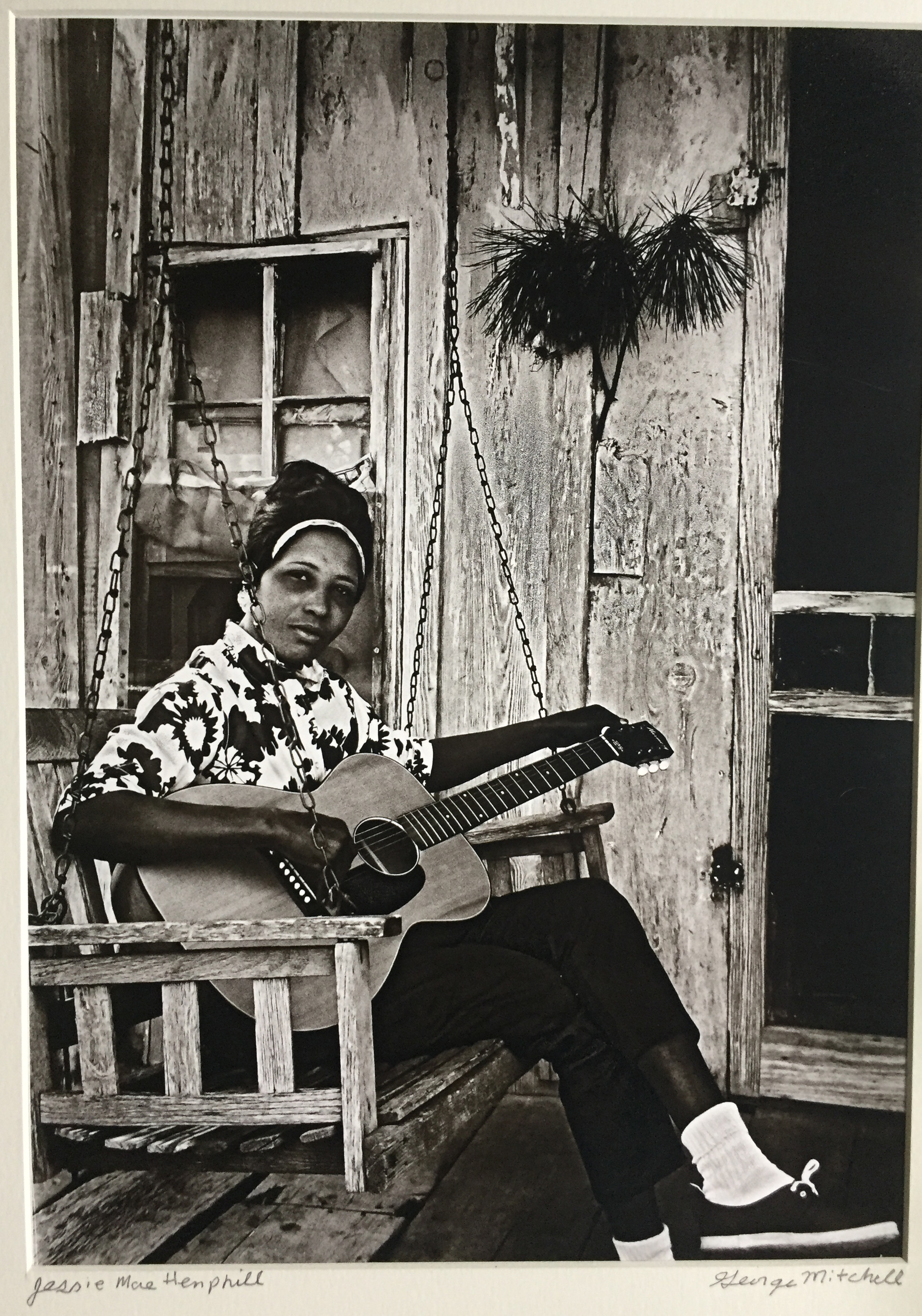
Jessie Mae Hemphill on her front porch, 1967, Senatobia, Mississippi by George Mitchell
Axel Küstner
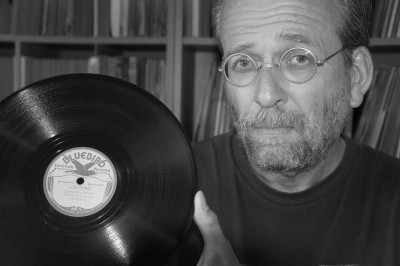
Axel Küstner at his home. By Frank Matheis 2014
In 1978 and again in 1980, chronicler/photographer/researcher Axel Küstner and sound engineer Siegfried A. Christmann sought to find previously unknown country blues musicians and collect “field recordings,” musicians in their natural surroundings, much like Alan Lomax, George Mitchell, David Evans or Chris Strachwitz had done a generation earlier. The pair packed up an Audiorecord Mobile Unit with Sennheiser microphones and over ten weeks they traveled 10,000 miles all over the States to record some old-time blues. The duo reported using 180,000 feet of audiotape, which culminated in issuing 14 LPs under the series Original Field Recordings- Living Country Blues USA. Photographer Axel Küstner took hundreds of photos and they interviewed many dozens of musicians. In 1980, they came up to Washington, D.C., where they recorded Flora Molton and her Truth Band, Archie Edwards, and John Cephas & Phil Wiggins. In Mississippi, they photographed Big Joe Williams. They made an indelible and powerful mark on the country blues, not just with these important sound recordings, but with the photographs that documented the era and put the spotlight on deserving musicians, some of whom had been previously underserved by the American blues. Their “field trip” documented an important part of the American country blues, and the Washington, D.C., blues scene in particular. Axel Küstner frequently publishes in Living Blues and other magazines and continues to be active as a blues expert in Germany, promoting blues artists who tour Germany, writing liner notes for a local record label, and as a 78-rpm record collector of various musical genres. His photographs of the place and time are an invaluable documentary and a cultural treasure.
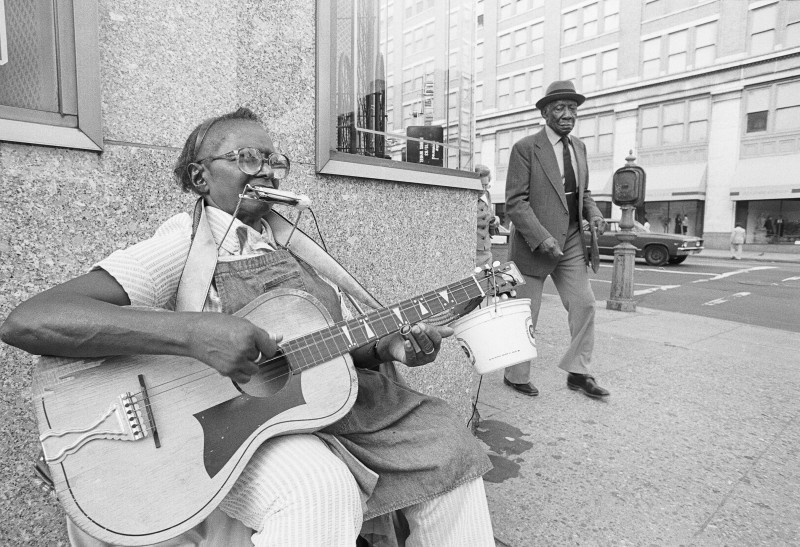
Flora Molton. Washington, D.C. 1980 by Axel Küstner.
Joseph Rosen
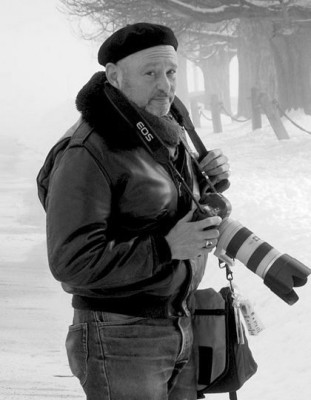 Joseph A. Rosen is a photographer based in New York City. He has been a working and exhibiting professional since prior to his graduation from Carnegie-Mellon University with a degree in Photography and Related Studies. He is a regular contributor to Living Blues magazine and other music publications. He regularly freelances for major corporations as well as national and local publications. In addition, he has long standing relationships with many of the record labels producing Blues, Jazz and roots related music. His work has graced the CDs of artists such as Big Joe Turner, Eddie Vinson, Jimmy Witherspoon, Buckwheat Zydeco, Hubert Sumlin, J.B. Hutto, Mighty Joe Young, Solomon Burke, The Persuasions, Hank Crawford, Lou Donaldson, Roomful of Blues, Ronnie Earl, Sugar Ray Norcia, Bobby Radcliff, Kenny Neal, Michael Hill, Johnny Sansone, and many others. Like many of his generation, he became enamored of the Blues in the “Blues-boom” of the late ‘60s. “Friends who were slightly older than I gave me the first Paul Butterfield album, which I loved. I bought an Elmore James record because it had some tunes in common with the Butterfield album, and that was that. I was a stone Blues listener from that point on.” In particular, his love of Blues and Jazz music has created an archive of images that contains more hundreds artists, many of which have been displayed in books, museums, music trade publications and on the walls of collectors. Joe released his book, BLUES HANDS, published by Schiffer Publishing in 2015. Joe received the prestigious “Keeping the Blues Alive in Photography and Art Award” for 2002. The award is presented by the Blues Foundation of Memphis, TN to an artist who has created a body of work which has brought the Blues to the public through photography and “made a significant contribution to the Blues world.”
Joseph A. Rosen is a photographer based in New York City. He has been a working and exhibiting professional since prior to his graduation from Carnegie-Mellon University with a degree in Photography and Related Studies. He is a regular contributor to Living Blues magazine and other music publications. He regularly freelances for major corporations as well as national and local publications. In addition, he has long standing relationships with many of the record labels producing Blues, Jazz and roots related music. His work has graced the CDs of artists such as Big Joe Turner, Eddie Vinson, Jimmy Witherspoon, Buckwheat Zydeco, Hubert Sumlin, J.B. Hutto, Mighty Joe Young, Solomon Burke, The Persuasions, Hank Crawford, Lou Donaldson, Roomful of Blues, Ronnie Earl, Sugar Ray Norcia, Bobby Radcliff, Kenny Neal, Michael Hill, Johnny Sansone, and many others. Like many of his generation, he became enamored of the Blues in the “Blues-boom” of the late ‘60s. “Friends who were slightly older than I gave me the first Paul Butterfield album, which I loved. I bought an Elmore James record because it had some tunes in common with the Butterfield album, and that was that. I was a stone Blues listener from that point on.” In particular, his love of Blues and Jazz music has created an archive of images that contains more hundreds artists, many of which have been displayed in books, museums, music trade publications and on the walls of collectors. Joe released his book, BLUES HANDS, published by Schiffer Publishing in 2015. Joe received the prestigious “Keeping the Blues Alive in Photography and Art Award” for 2002. The award is presented by the Blues Foundation of Memphis, TN to an artist who has created a body of work which has brought the Blues to the public through photography and “made a significant contribution to the Blues world.”
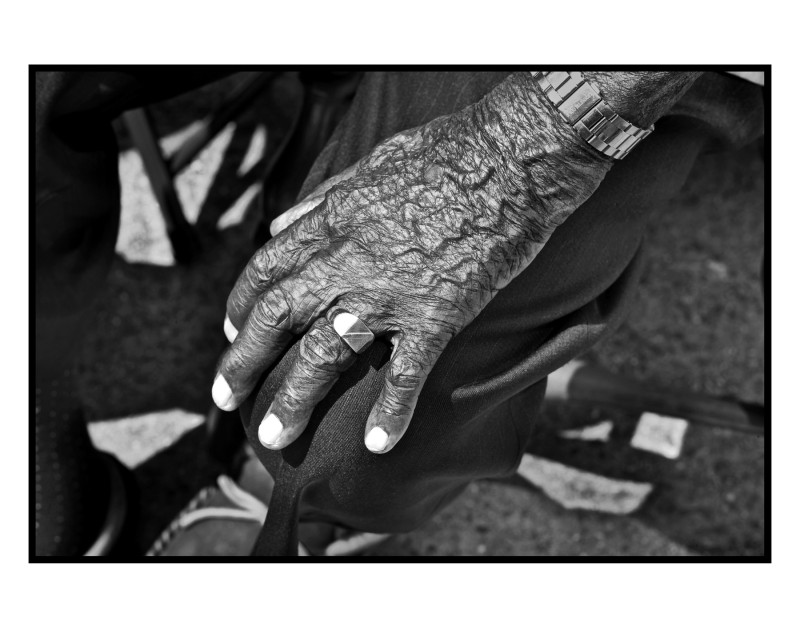
Honeyboy Edwards’ hands by Joseph Rosen.
Douglas Baz
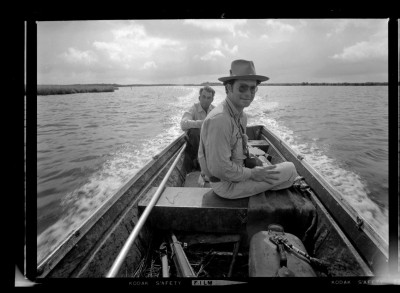
Douglas Baz. 1974.
Douglas Baz is a freelance and fine art photographer and one of the most respected music photographer’s in the Hudson Valley of New York. The multiple award winner has been active in photography since the 1970s, including as professor of photography Sarah Lawrence College in Bronxville, New York, Florida State University, and Columbia College, Chicago, Illinois. He founded the Photography Department at Bard College, New York in 1975. Douglas’ work has been exhibited internationally. His impressive resume includes having work in the permanent collection of prestigious galleries and institutions including the Historic New Orleans Collection, New Orleans, Louisiana, the Boston Museum of Fine Arts, the Chicago Art Institute, the Library of Congress Archives, the George Eastman House, Rochester, New York, the Museum of Modern Art, New York, and many more. He studied with world renowned photographer Aaron Siskind and earned a master’s degree in photography from the Institute of Design in Chicago. His work has been shown regionally and internationally and is in a variety of permanent collections including the Museum of Modern Art and the Smithsonian Institution. Dougls has received numerous grants for his photographic work from the National Endowment of the Arts, the New York State Council on the Arts, and other organizations. The images in this exhibition are from a documentary project he and photographer Charles Traub photographed in Cajun Louisiana in 1974. A large exhibition and book of this work will be exhibited at the Historic New Orleans Collection Museum in 2019.
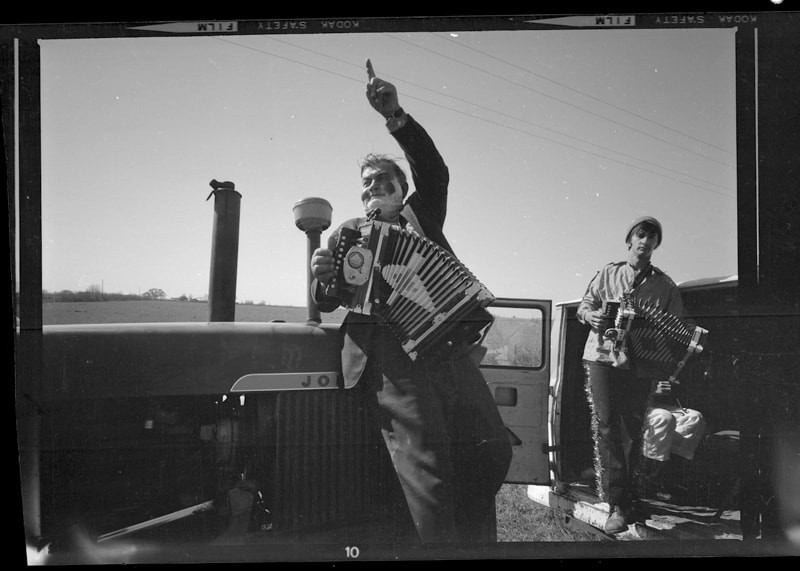
Nathan Abshire, courir de Mardi Gras. Mamou, Louisiana by Douglas Baz and Charles Traub. 1974
Bibiana Huang Matheis
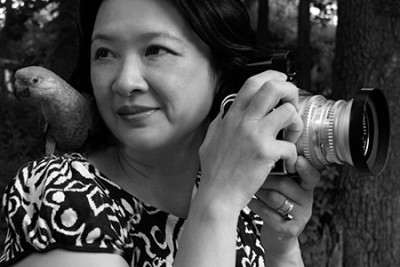 Bibiana is an artist, fine arts photographer and curator whose photos have been published in and exhibited nationwide and in Europe. She frequently facilitates art exhibits at the Howland Cultural Center, and she was instrumental in encouraging her husband Frank to curate American Roots Music – A photo documentary exhibit of music and musicians in the acoustic traditions. Her music photography extends over many decades of collaborating with Frank, who is primarily a writer. She is a regular photography contributor to Living Blues magazine and thecountryblues.com.Over the past two decades, her activity has been exhibit curating. This includes a highly successful series of art exhibitions titled “Meeting Past” at the Akin Library and Museums in Pawling, New York, the Howland Cultural Center in Beacon and the Hammond Museum in North Salem, New York. She is widely recognized in the region as a consummate professional who selflessly helps and supports other artists, and who is a strong advocate for the arts in the region. Bibiana studied at the Maryland School of Art and Design and at the Corcoran School of Art. She has been active in the arts since the late 1970s. Her work has appeared in major exhibits and publications of all types in the US and Europe. Bibiana is the recipient of the 2014 Dutchess County, New York, Executive Arts Award – Individual Artist – selected in collaboration with Arts Mid-Hudson to recognize outstanding people in the arts. She was also bestowed the 2015 ArtsWestchester ‘50 for 50’ Arts Award. Her artist statement is simple and to the point: The ordinary can be the extraordinary.
Bibiana is an artist, fine arts photographer and curator whose photos have been published in and exhibited nationwide and in Europe. She frequently facilitates art exhibits at the Howland Cultural Center, and she was instrumental in encouraging her husband Frank to curate American Roots Music – A photo documentary exhibit of music and musicians in the acoustic traditions. Her music photography extends over many decades of collaborating with Frank, who is primarily a writer. She is a regular photography contributor to Living Blues magazine and thecountryblues.com.Over the past two decades, her activity has been exhibit curating. This includes a highly successful series of art exhibitions titled “Meeting Past” at the Akin Library and Museums in Pawling, New York, the Howland Cultural Center in Beacon and the Hammond Museum in North Salem, New York. She is widely recognized in the region as a consummate professional who selflessly helps and supports other artists, and who is a strong advocate for the arts in the region. Bibiana studied at the Maryland School of Art and Design and at the Corcoran School of Art. She has been active in the arts since the late 1970s. Her work has appeared in major exhibits and publications of all types in the US and Europe. Bibiana is the recipient of the 2014 Dutchess County, New York, Executive Arts Award – Individual Artist – selected in collaboration with Arts Mid-Hudson to recognize outstanding people in the arts. She was also bestowed the 2015 ArtsWestchester ‘50 for 50’ Arts Award. Her artist statement is simple and to the point: The ordinary can be the extraordinary.
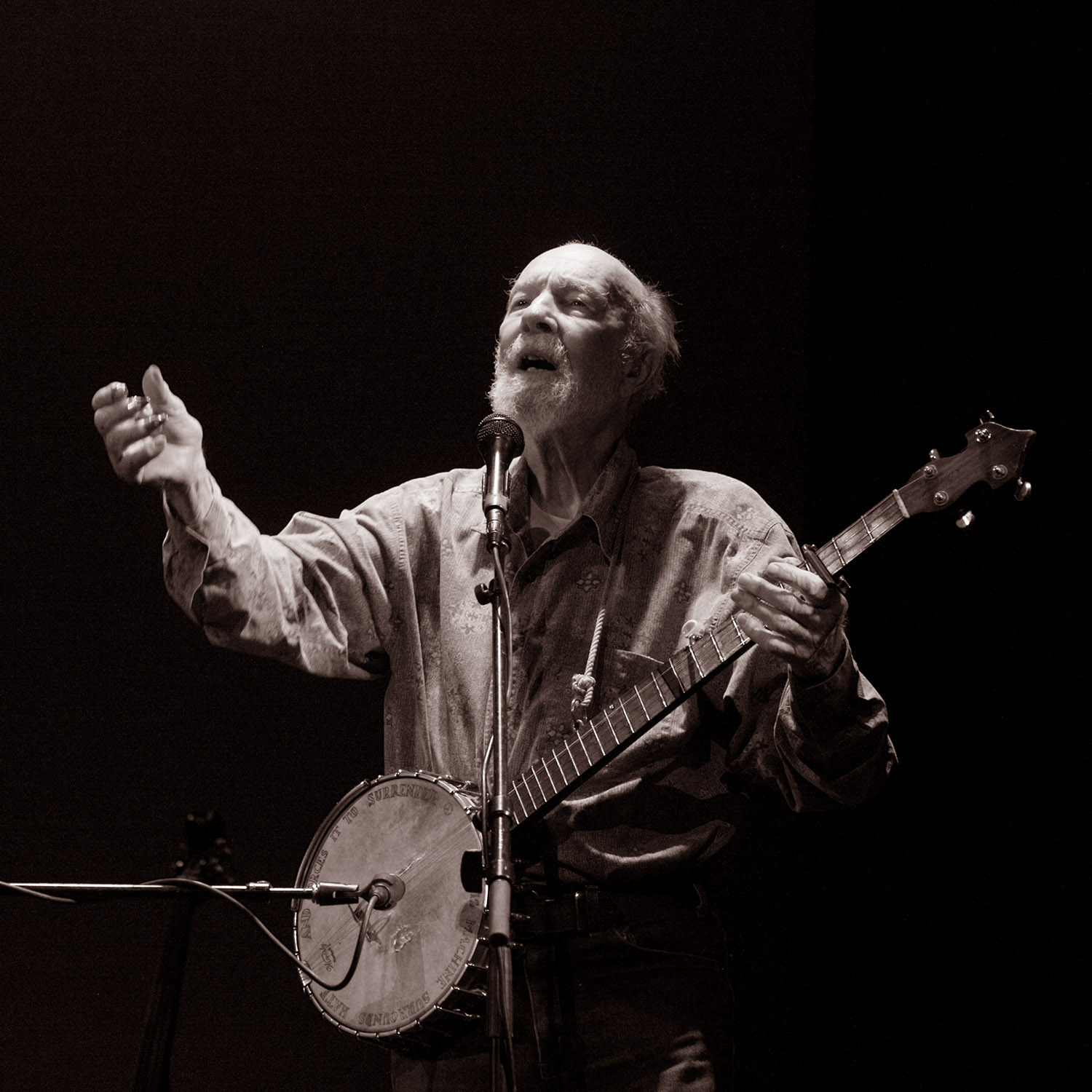
Pete Seeger by Bibiana Huang Matheis 2008
Jack Hirschorn
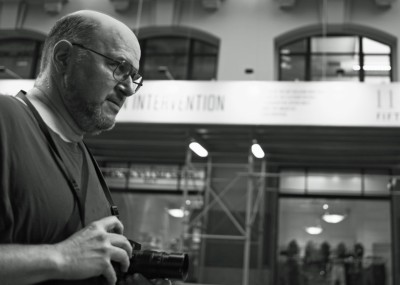
Photographer: Robert Sands
The Brooklyn based fine art photographer has emerged as one of the primary chroniclers and documentarians of one of New York’s most important contemporary roots music scenes: the Jalopy Theatre and School of Music. It’s more than just being at the right place at the right time. Hirschorn’s photos capture the essence, indeed the vibe, the heart and soul of the place, people and the music.What once happened in Greenwich Village in the 1960s is now happening at the Jalopy, a place that has found national fame. One day Hirschorn’s photos will take the same prominence as those who documented the early folk revival. “I am a lifelong photographer trained by my photographer teacher,my father Milton I Hirschorn. I have combined my love of traditional music with photography to document the 12 year-old Jalopy Theatre in Brooklyn, New York, which has become the 21st Century NY Folklore Center as originally founded by Izzy Young. In the winter of 2008, I first went to Jalopy and soaked up the vibe of the uneven wooden floor, the red brick walls, the golden ring of lights around the stage, the slightly dusty air and the beat-up piano. I fell in love on that dark cold winter night of 2008 with Jalopy. Throughout the last 10 years, I have struggled to show those private magical moments when the artists are lost in their music, having forgotten momentarily about the audience and myself with the camera.”
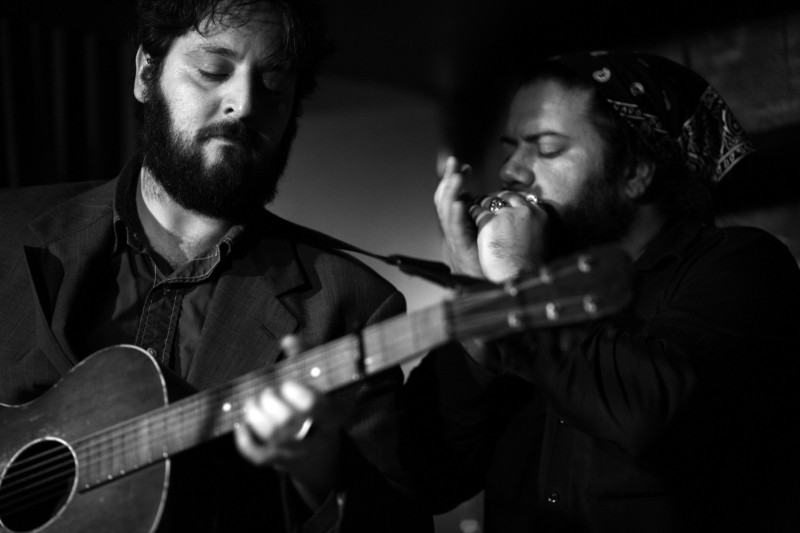
Ernie Vega-Guitar and Ernesto Gomez-Harmonica 2012 .The Gaslight Cafe, New York, NY, by Jack Hirschorn
Liz Rabson Schnore
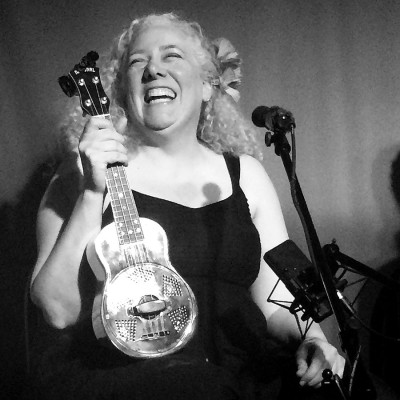 Liz Rabson Schnore is a Brooklyn-based musician and visual artist with a passion for photography. Daughter of acclaimed blueswoman Ann Rabson, she grew up in Virginia in the heart of Piedmont blues country. She holds a Master of Arts degree in Studio Art with a focus in fine art photography from NYU-Steinhardt, a certificate in photography and digital imaging from Pratt Institute and a BFA degree in sculpture and art history from Virginia Commonwealth University. She studied jazz guitar, fell in love with punk rock, and played with many bands, but she is always heavily influenced by blues and roots music she grew up with. She is active in the Brooklyn ukulele and folk music scene. Artist’s Statement: “Objects of Desire: The Visual Language of Musical Instruments” These images recall another photograph, Man Ray’s famous “Le Violon d’Ingres,” of a woman with f-holes superimposed on her back. The instruments I’ve photographed present a similar idea, but in reverse. Carefully and expertly crafted – wood, metal and strings bent and formed to the sole purpose of making music – these instruments remind me of the human body, of automobiles, of flowers, of sound made visible. I hope my photographs convey not only the potential these instruments have to make incredible music, but also the beauty and sensuality they hold as objects, as sculpture, as art. Thanks to RetroFret and the Jalopy Theater for providing instruments for this series.
Liz Rabson Schnore is a Brooklyn-based musician and visual artist with a passion for photography. Daughter of acclaimed blueswoman Ann Rabson, she grew up in Virginia in the heart of Piedmont blues country. She holds a Master of Arts degree in Studio Art with a focus in fine art photography from NYU-Steinhardt, a certificate in photography and digital imaging from Pratt Institute and a BFA degree in sculpture and art history from Virginia Commonwealth University. She studied jazz guitar, fell in love with punk rock, and played with many bands, but she is always heavily influenced by blues and roots music she grew up with. She is active in the Brooklyn ukulele and folk music scene. Artist’s Statement: “Objects of Desire: The Visual Language of Musical Instruments” These images recall another photograph, Man Ray’s famous “Le Violon d’Ingres,” of a woman with f-holes superimposed on her back. The instruments I’ve photographed present a similar idea, but in reverse. Carefully and expertly crafted – wood, metal and strings bent and formed to the sole purpose of making music – these instruments remind me of the human body, of automobiles, of flowers, of sound made visible. I hope my photographs convey not only the potential these instruments have to make incredible music, but also the beauty and sensuality they hold as objects, as sculpture, as art. Thanks to RetroFret and the Jalopy Theater for providing instruments for this series.
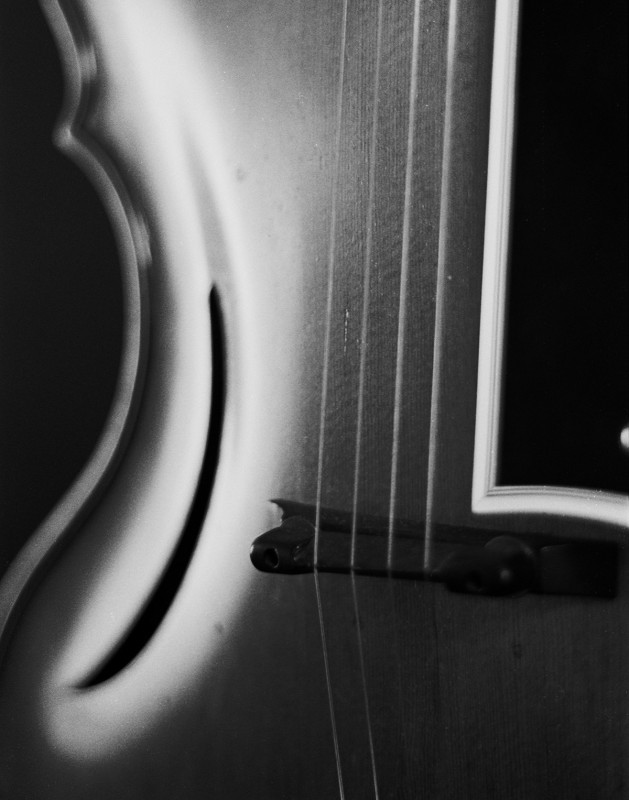
Tenor Wilkanowski. 2007 by Liz Rabson Schnore
John Rocklin
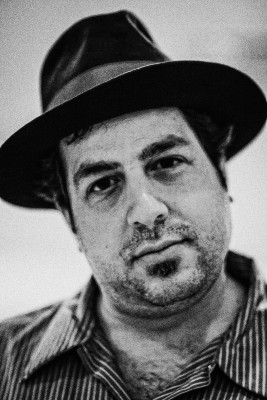
John Rocklin self portrait
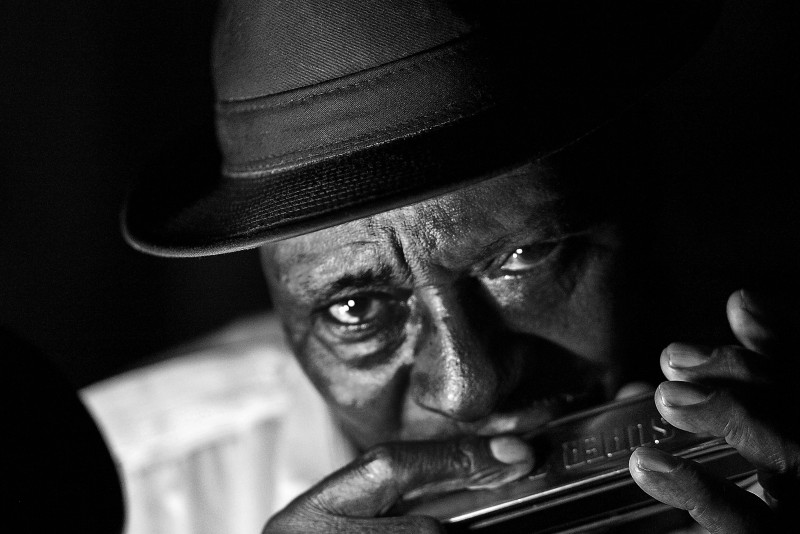
Little Sammy Davis by John Rocklin
Myron Samuels
The late Myron Samuels was a serious blues fan and photographer who started to chronicle roots & blues in the late 1970s. He was a Baltimore native and longtime Maine resident, who lived his life with gusto and was truly a friend to man. For 30 years, he devoted himself to the care of adults with developmental disabilities in various capacities through his work for the State of Maine, initially as a recreational therapist and most recently as a case manager. When not hard at work for the state, folks could find him sharing his passion for the blues and all music – for decades as a volunteer DJ on WMPG community radio, and as a street musician singing his heart out and playing the blues harp at Portland area venues and farmers markets for all who would come by to listen and tap their toes. Myron left behind a collection of negatives. thecountryblues.com thanks his family for allowing Frank to scan in a few images to display at this exhibit. His posthumous exhibit includes several rarities, among them shots of Etta Baker, Ted Bogan and John Cephas teaching, depicted below.
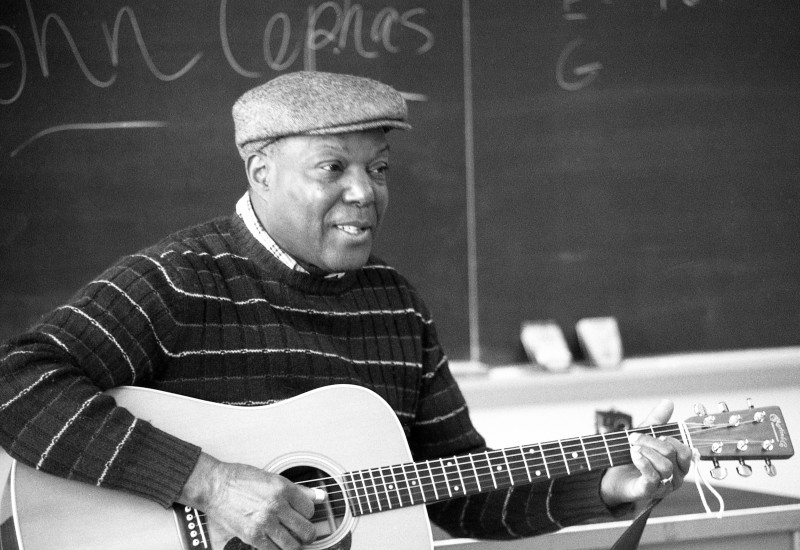
John Cephas teaching by Myron Samuels
The Avalon Archives
Ned Moran’s Avalon Archives Museum of Rock & Roll is a tribute to musicians through art and education. The exhibit permanently installed in its new home at The Falcon Underground in Marlboro, New York, Founder, director, and curator, Ned Moran’s extraordinary displays of rare and obscure photos, posters, album covers, books, and recordings are the primary visuals for our intimate space.
Frank Matheis
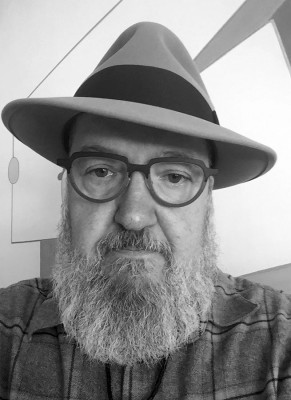
Frank Matheis i-phone selfie 2018.
Frank conceived and curated the American Roots Music– A photo documentary exhibit of music and musicians in the acoustic traditionsat the Howland Cultural Center. He could accomplish that only with encouragement and support from his wife, photographer and curator Bibiana Huang Matheis, as this is the first exhibit Frank has curated. He also debuted his own music photography – rather daringly and audaciously. Frank is a self-taught music historian of the roots & blues, as well as a DJ, radio producer, music journalist and, as of recently, photographer. He is co-author the book Sweet Bitter Blueswith blues harmonica player and National Heritage Fellow Phil Wiggins (provisionally accepted by University Press of Mississippi – American Made Music Series pending edits). As contributing writer to Living Blues magazine, and formerly to Blues Access magazine, he is also the publisher of a website dedicated to the acoustic blues thecountryblues.com. He has published over 500 music articles and spent a decade on the radio in New York & Connecticut hosting blues & roots shows on WKZE FM and WVKR FM. As radio producer, his roots & blues documentaries have aired in Germany and Slovenia, and numerous stations in the USA and Australia. He is recipient of the New York Festivals 2003 – Best International Documentary award for “American Folk Music from Hawaii to Quebec,” produced in German for the German NPR Deutschlandradio.
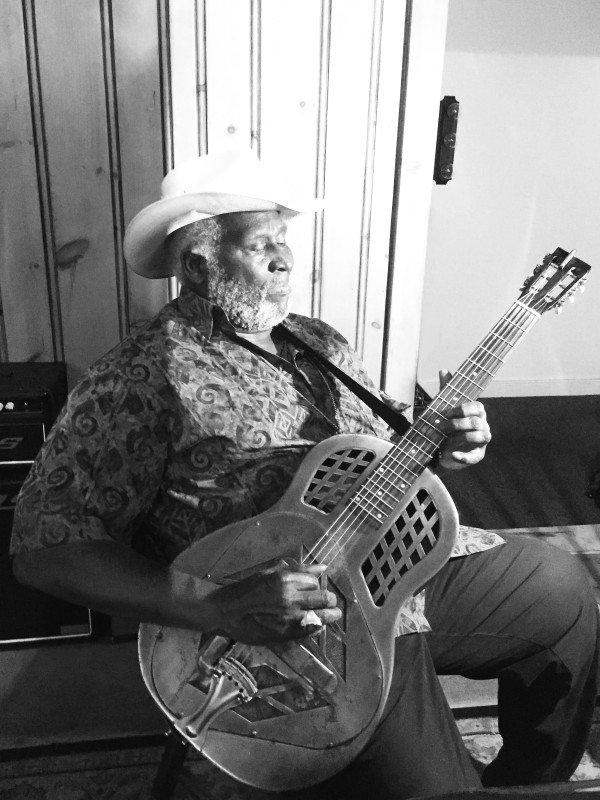
Taj Mahal backstage, by Frank Matheis 2017
